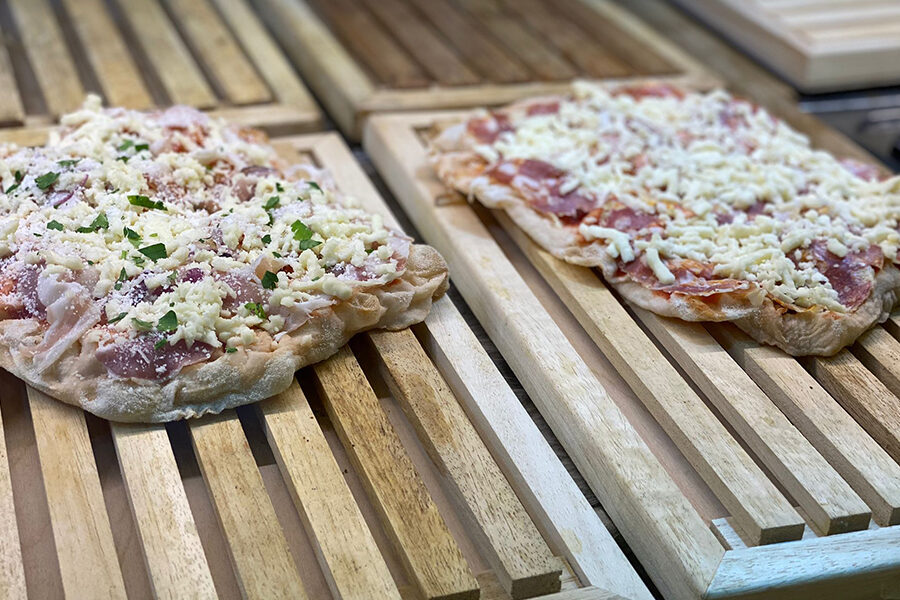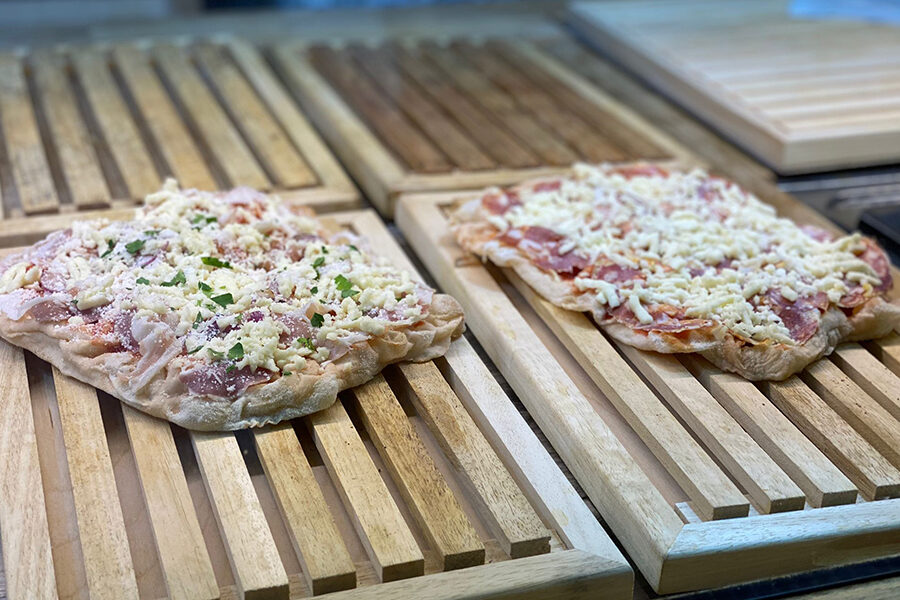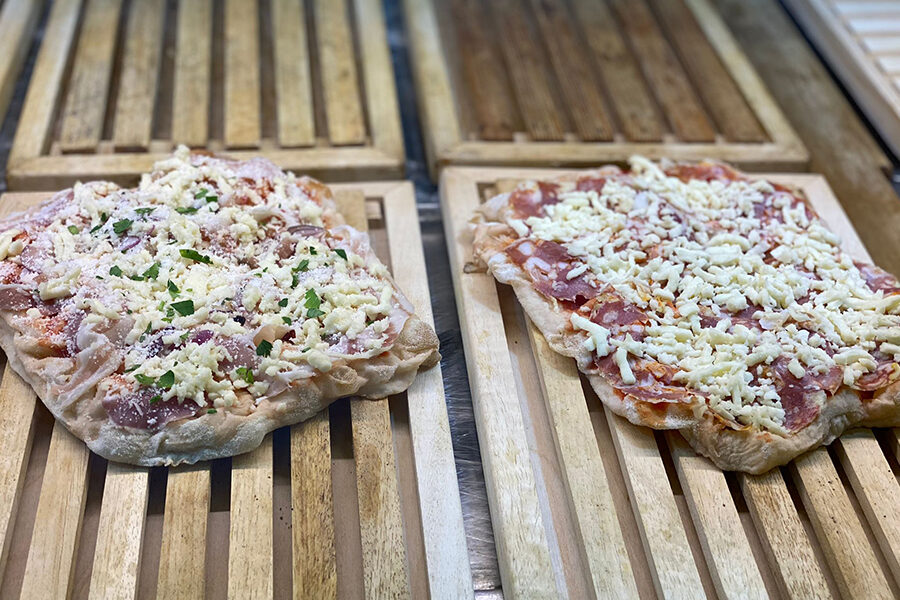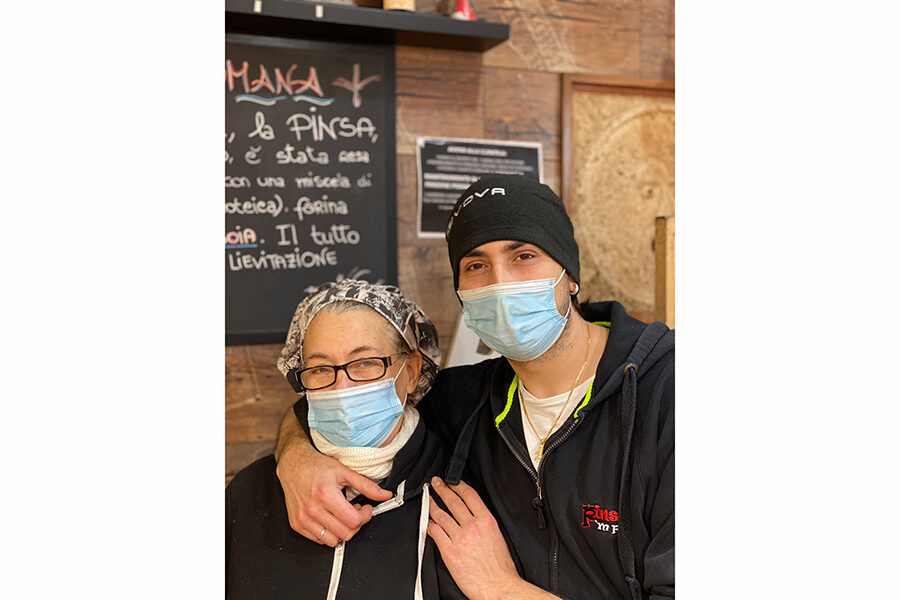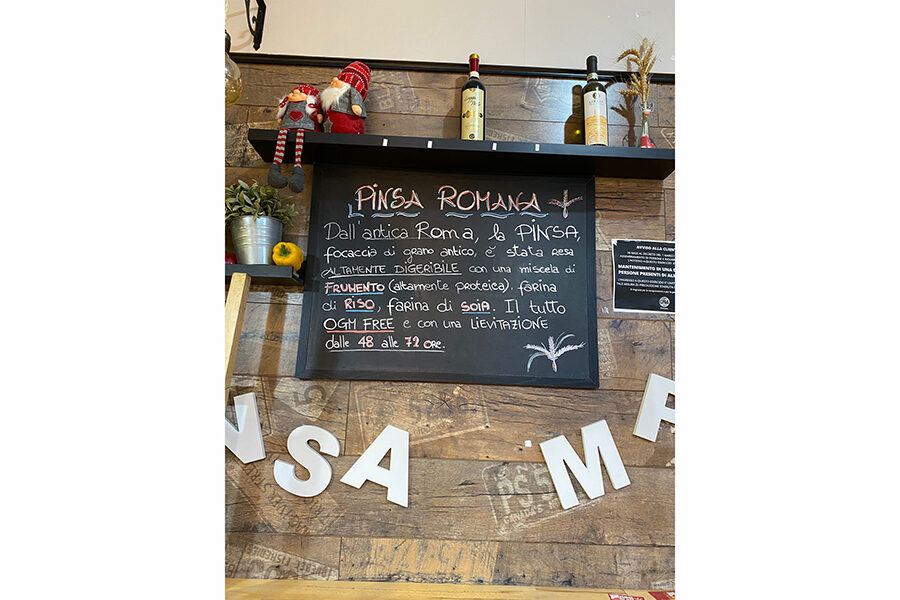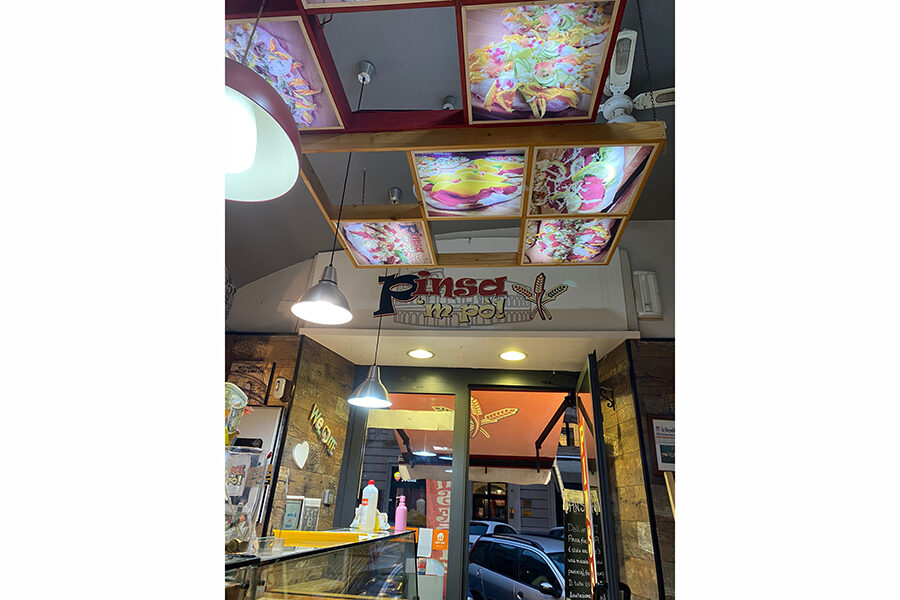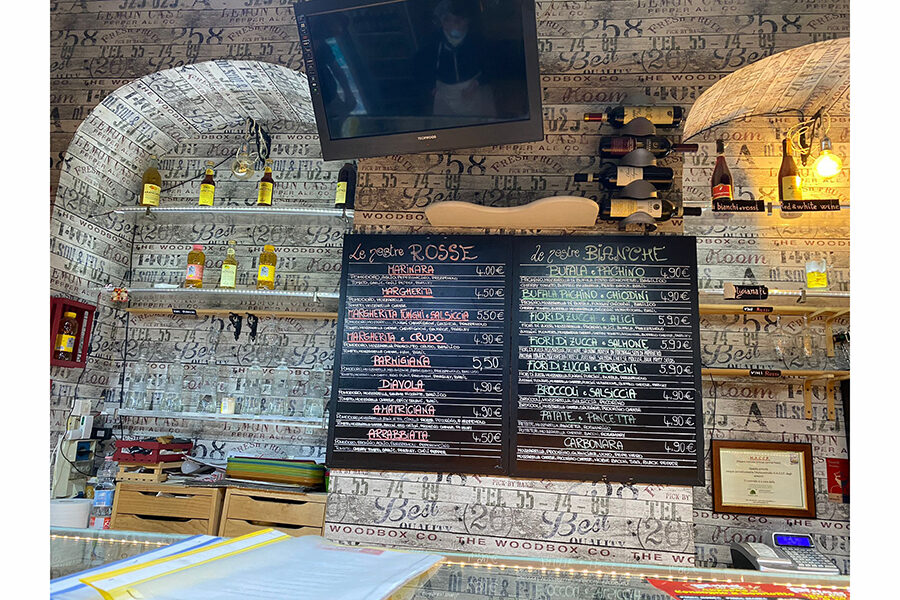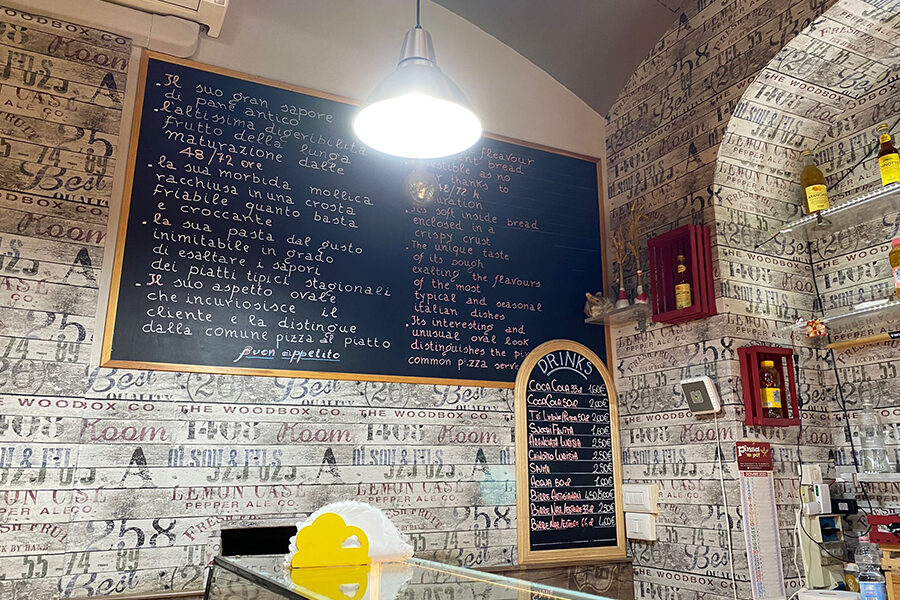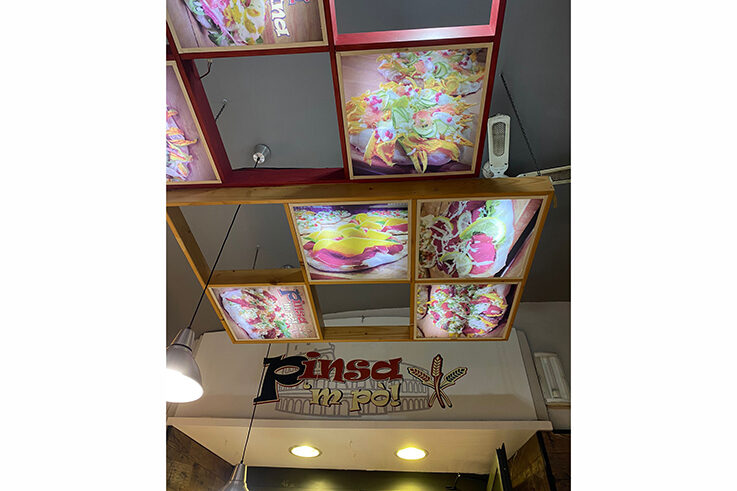“Pinsa ‘m po’!” A tasty idea invites you to enter the venue run by Vincenza Marinelli and her sons Paolo Andrea and Alessio in Via dei Gracchi, crossing via Ottaviano in the elegant district of Prati in Roma. They have taken up the grandfather’s legacy and now their family counts almost 60 years of activity in tickling the palates of roman residents and tourists, just a few blocks from Saint Peter’s Dome.
Good morning Vincenza, your venue has a long story indeed, and in the last few years it has been transformed, proposing a recipe that dates back downright to the ancient Romans. What are the reasons that moved the three of you to undertake this activity? What’s your story?
“Pinsa ‘m pò” is our little venue, I am Vincenza, the holder (and the tinker), my son Paolo Andrea is the chef, while my other son Alessio is the sales manager and… the history enthusiast. In 1964 my father opened a bakery here; when he retired, we have carried on his legacy and turned the bakery into a deep-dish pizza place, where we have worked for more than 20 years! In order to attract new clients, and propose a new product that could meet the new generations’ tastes, my sons have decided to change again and mix together tradition and innovation… and here it is the Pinsa!
But where does the “pinsa” come from? Is it true that it was one of the most appreciated food in ancient Roma?
The name “pinsa” comes from the Latin word “pinsere”, which means “stretch” as it is the shape of some focacce made of mile, barley and spelt knead and sold on some big wooden tables at the gates of Roma.
How a “pinsa” is made? What are the ingredients, and the cooking procedure?
We use blends of rice flour, soy and wheat, that make the product highly digestible and flavored; for the toppings, we choose only seasonal ingredients. The proceeding for a good pinsa requires plenty of time and care, from the preparation of the dough, that needs to ripen in the fridge for 48/72 hours at the same temperature, to the shaping of the little balls. The balls in turn must rise for several hours before they can be stretched out, blanched for a few minutes, and, once cooled, stuffed and again put in the stove to complete the cooking.
A true delicacy: but which one is the most popular? Which one is the most…sought-after?
We have a lot of recipes… too long to be listed: the red pinse, the white ones and also the ‘pinse gourmet’, among which there are the ‘Red Sapphire’, ‘Chicory and Pears’, ‘Granny Smith’, ‘Bacon and Endive’… For sure, and as good romans we can’t be but proud of them, the most popular remains the ‘carbonara’ and the ‘amatriciana’, maybe tasted alongside a good little organic bier.
Certainly, the pandemic must have impacted your activity… It’s sad to see the barstools laying upside down on the tables…
It’s common knowledge, the lockdown has heavily damaged the catering activities. We have lost 80, 90 percent of our earnings. One year ago, before the pandemic, we used to have three workers with us: now they are in layoffs and… still waiting for the subsidy. With the delivery and the takeaway, the three of us are trying to pay at least the rental and utilities….
In short, the situation is really complicated. But 2021 may finally bring us back to normal… Do you have in mind a project to re-launch your activity, yet?
Let us hope that in 2021 everybody can be back to normal and we will throw ourselves again into work with the usual passion that has always distinguished us.
PINSA ‘M PO’!
Via dei Gracchi, 7 – ROMA
Consegna a domicilio: 06/88980716 – 3291021779
www.pinsampo.it
Instagram: pinsa_mpo

